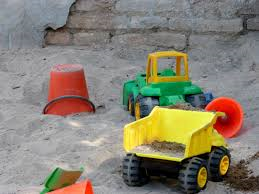1.1: How Young Children Learn: What Science Reveals
Dawn Brown and Erin Jones
In the early twentieth century, scientists and theorists, such as Jean Piaget and Lev Vygotsky, developed widely studied theories to explain how young children acquire knowledge. Scientists have continued to study children’s ways of knowing by carefully observing and listening as children pursue new skills, explore materials, solve problems, work together with others, and encounter experiences that prompt them to think and reason (Shonkoff and Phillips, 2000). Young children’s actions and explanations explain how they develop ideas, master skills, and build knowledge. This research highlights a key finding: infants and young children actively construct concepts and develop skills by interacting with objects and people, much of which occurs in the context of play. By nature, children are active participants in making meaning and constructing knowledge.
The body of research on the developing mind of the young child also adds to our understanding of what it means to teach and to plan curriculum for infants and young children. The long-standing image of a K–12 education teacher as an active, talking figure who imparts information to passive, quiet children does not align with what is known from the science of early learning and development. Young children seated at desks and quietly listening, refraining from interjecting their ideas, represent an image that diverges from the one generated by developmental science: that of young children actively seeking to participate in an experience to build concepts, ideas, and skills. Studies show that infants and young children are highly motivated to explore new materials and to take on new challenges (Bowman, Donovan, and Burns, 2000).
Robust scientific evidence provides a starting point for guidance on planning and implementing early childhood curriculum. Reviews of research point clearly to three principles concerning how young children learn (Bowman, Donovan, and Burns 2000; Hirsh-Pasek et al. 2009; Schonkoff and Phillips 2000):
For example, for a group of three- and four-year-olds fascinated by the heavy equipment vehicles passing outside the yard, a teacher might use a construction site next to the school as the context for study or focus of the curriculum. The children’s excitement about the ongoing construction inspires an investigation with the children of the events underway in this neighboring lot. In considering the study of the construction site, teachers can envision ample opportunity for children to build concepts related to science, mathematics, literature, the arts, and social studies. The teachers create learning contexts that engage children in finding out more about the events underway in the neighboring construction project. Such an investigation offers many possibilities for the children to explore concepts from various domains or subject areas addressed in the three volumes of the preschool learning foundations, such as size, number, spatial relations, causality, story, song, drama, visual representation, and much more. With the preschool learning foundations and curriculum framework as guides, teachers can, within this study, tap multiple domains—social science, natural science, physical science, language arts, visual arts, physical development, and mathematics.[1]

Check Your Knowledge
To complete the quiz. follow these instructions:
-
Read the Question Carefully
Each question presents a statement related to child development theories. -
Choose Your Answer
-
Click True if you believe the statement is correct.
-
Click False if you believe the statement is incorrect.
-
-
Submit Your Response
-
After you select your answer, click the Check button (or the submit option provided).
-
-
Review the Feedback
-
You will immediately see whether your answer was correct or incorrect.
-
Feedback will explain why the answer is right or wrong, helping you connect the concept back to the learning material.
-
-
Move to the Next Question
-
Click Next to continue through the quiz.
-
Each question builds on important concepts, so read carefully.
-
-
Complete All Questions
-
Work through each item until you reach the end of the quiz.
-
Some quizzes may show your score at the end.
-
-
Use Feedback for Learning
-
If you miss a question, review the feedback closely—it highlights key points from the theories.
-
You can retry questions if your instructor has enabled this feature.
-
Check Your Knowledge
Type your key takeaways here.
- First
- Second

Feedback/Errata